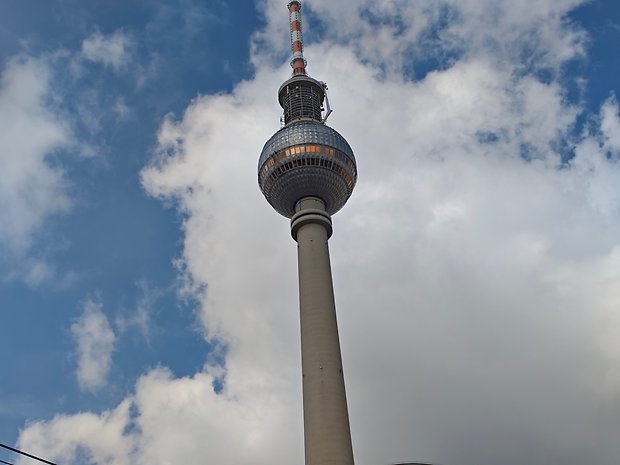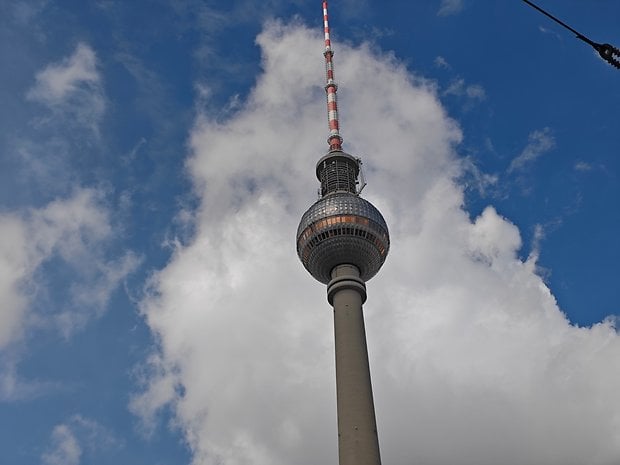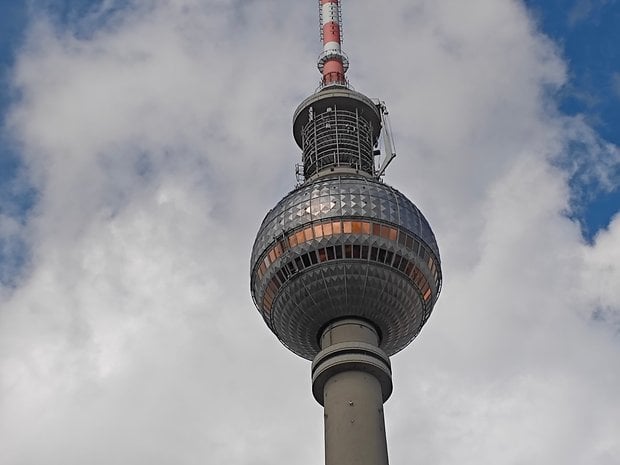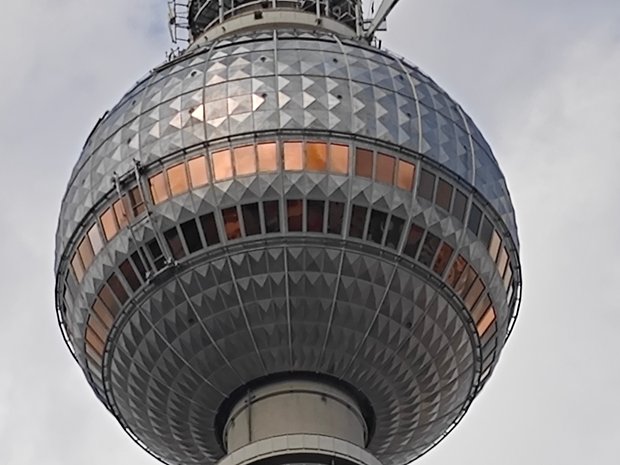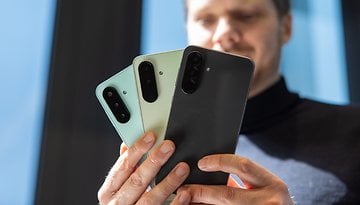Poco F6 vs. Poco F6 Pro Compared: Is Cheaper Better?
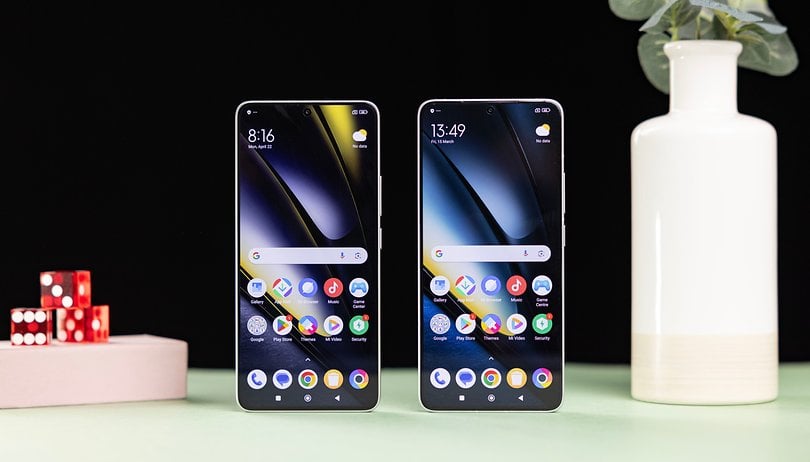

Xiaomi unveiled its new mid-range smartphones, the Poco F6 and Poco F6 Pro, at a launch event in Dubai. Both devices boast 6.7-inch displays, Snapdragon SoCs, and 50 MP cameras. In this article, you will find out where the two models differ, what they have to offer, and where you can purchase them.
The new Poco phones in the F6 series succeed the Poco F5 and Poco F5 Pro while aiming to be mid-range models that might come close to the premium segment in certain areas at a fair price. As always, we begin with a glance at the technical specifications.
Poco F6 and Poco F6 Pro compared: Technical specifications
| The 2024 Poco F series phones compared | ||
|---|---|---|
| Product | ||
| Picture | 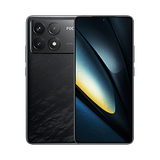 |
 |
| Review |
|
|
| Display |
|
|
| SoC |
|
|
| Memory |
|
|
| OS |
|
|
| Camera |
|
|
| Selfie Camera |
|
|
| Battery |
|
|
| Connectivity |
|
|
| IP Certification |
|
|
| Dimensions and weight |
|
|
| Offers* |
|
|
Different design styles and display resolutions
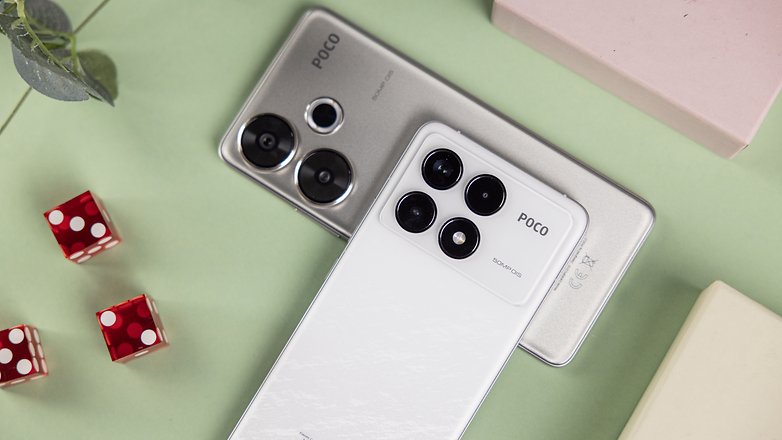
Visually, both models impressed with a design that offers far more than many of their cheaper predecessors. The Pro model has a camera island where the three cameras and the flash are housed, which is typical of models released in recent years. The basic model, on the other hand, does away with the island, enabling the two sensors to protrude separately from the device. The macro camera is also missing, which means the number of cameras alone results in an entirely different design.
However, these are not the only differences between the two devices, which at least share the 6.67-inch screen. Only the basic model (!) is IP64-certified. The fact that the Pro model is still around 20 grams heavier is probably due to Poco relying on a matte aluminum frame, while the F6 makes do with plastic.
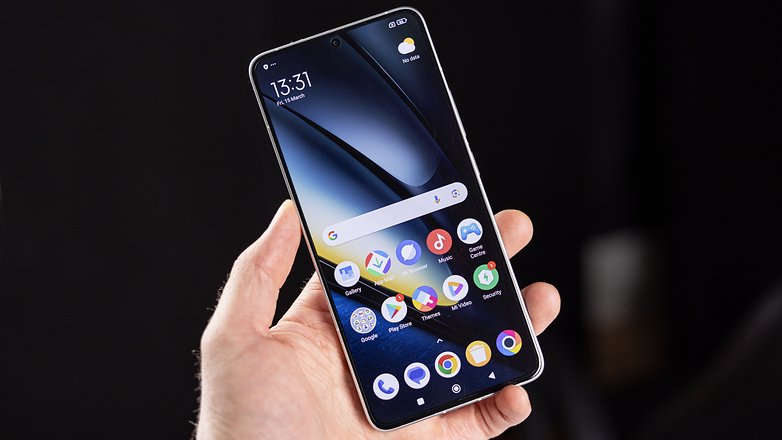
The differences also continue with the type of glass used: The Poco F6 protects its display with Corning Glass Victus, while the Pro sibling relies on an unnamed glass type. Apart from that, the display shows us why the more expensive model deserves the "Pro" designation. It has a higher resolution (1,440p) and offers a peak brightness of 4,000 nits, which is significantly brighter than the peak brightness of the FHD+ panel in the cheaper device (2,400 nits). The F6 Pro is also ahead in terms of typical brightness, with 700 vs. 500 nits.
However, both rely on AMOLED technology and feature a 120 Hz refresh rate, as well as an identical touch sampling rate of 2,160 Hz.
Surprisingly equivalent performance on the Poco F6 models
When it comes to performance, both F6 models offer surprisingly similar experiences despite the price difference. Both the Poco F6 and F6 Pro offer flagship-level performance, with a slight advantage in games to the Pro model thanks to its higher CPU and GPU frequencies. In general usage, both phones offer snappy performance, thanks to the modern processors and fast memory standards.
Application loading times are as fast as any premium Android phone (even those costing two or three times as much), and both Poco F6 models match or beat other phones in the price category.
| Poco F6 Pro (Snapdragon 8 Gen 2) |
Poco F6 (Snapdragon 8s Gen 3) |
Google Pixel 8a (Tensor G3) |
Xiaomi 14 Ultra (Snapdragon 8 Gen 3) |
OnePlus 12R (Snapdragon 8 Gen 2) |
Galaxy S23 FE (Exynos 2200) |
Nothing Phone (2) (Snapdragon 8+ Gen 1) |
|
|---|---|---|---|---|---|---|---|
| AnTuTu | 1,563,987 | 1,455,312 | 1,153,512 | 1,939,484 | 1,307,367 | n/a | 1,154,515 |
| 3DMark Wild Life Extreme Stress Test |
n/a | Best loop: 3140 Worst loop: 2584 Stability: 82.3% |
Best loop: 2437 Worst loop: 1667 Stability: 68.5% |
Best loop: 4708 Worst loop: 3606 Stability: 76.6% |
Best loop: 3660 Worst loop: 2462 Stability: 67.3% |
Best loop: 2370 Worst loop: 1809 Stability: 76.3% |
Best loop: 2793 Worst loop: 1687 Stability: 60.4% |
| Geekbench 6 | Single: 1442 Multi: 5318 |
Single: 1953 Multi: 4930 |
Single: 1688 Multi: 4362 |
Single: 1828 Multi: 6317 |
Single: 1561 Multi: 5142 |
Single: 1614 Multi: 4073 |
Single: 1712 Multi: 4521 |
The Pro version comes with a substantial increase in memory capacity: The F6 base model comes with a choice of 8 or 12 GB RAM and 256 or 512 GB non-expandable memory. The Pro also comes with a 1 TB option, and you can choose between 12 and 16 GB of RAM. However, at least both handsets feature the same technology, offering LPDDR5X + UFS 4.0 memory.
When it comes to connectivity, the more expensive model offers Wi-Fi 7 instead of Wi-Fi 6 in the Poco F6. However, the newer Bluetooth technology (5.4 vs. 5.3) is reserved for the base model. Stop making life tough for us, Xiaomi!
Noticeable camera differences (and a useless macro camera)
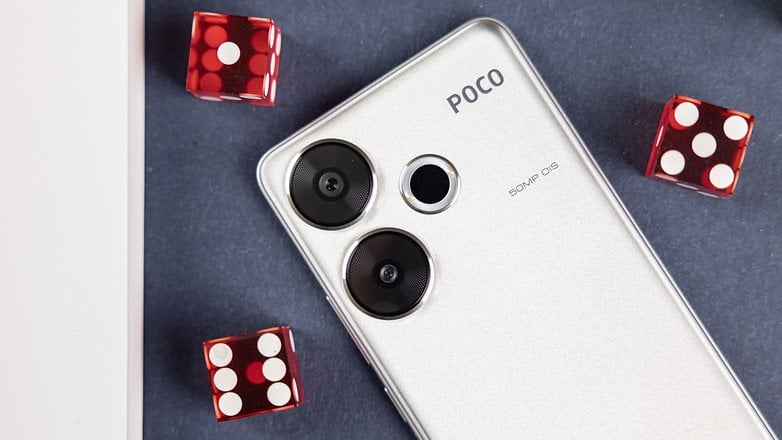
Even though the back of the smartphone shows an immediate visual difference in terms of cameras, we begin the camera comparison with one thing in common: both smartphones are spearheaded by a 50 MP camera with optical image stabilization. The aperture of the Poco F6 was specified as f/1.59 in the specifications, while the Pro has an f/1.6 aperture. The F6 Pro is equipped with the Light Fusion 800 sensor, with the cheaper model relying on the older Sony IMX882 sensor.
Both also have an 8 MP ultra-wide-angle camera, with decent results but with a small loss in detail and colors. The F6 has a 20 MP shooter in front, while the Pro has a 16 MP shooter. For reasons that only Poco knows, only the Poco F6 Pro has the joke of a 2 MP macro sensor.

My colleague Rubens Eishima noticed during the Poco F6 review that the cameras have improved noticeably compared to its predecessor, the F5, but it is still not perfect. Not especially when the ultra-wide angle sensor is used for night shots and the selfie camera's beauty filter, which is enabled by default.
Poco F6 sample photos:
The Poco F6 Pro comes with a bigger sensor for the main camera and the results are usually better, with an improved image quality already on the camera app preview. We felt that pictures were sharper than on the Poco F6, but ultra-wide photos were roughly equivalent between the two models. For selfies, the beauty filter is off by default on the F6 Pro, a welcome change.
Poco F6 Pro sample pictures:
HyperOS onboard with an improved update policy
The two models differ quite considerably from each other in various areas. When it comes to software, however, they come together again. In other words, you get HyperOS based on Android 14. Unfortunately, both devices also agree that you can never have enough bloatware installed. Rubens counted a whopping 18 pre-installed apps in his F6 review and 19 apps on the F6 Pro, which have taken up a lot of storage space.

What is nice, however, is how Xiaomi's long-neglected software update policy is slowly but steadily picking up speed. The Chinese company is adding another year to its software updates, which means these handsets will be supplied with three years of major Android updates and up to four years of security patches. However, it remains to be seen how regularly the latter will find their way onto the hardware.
Faster charging on the F6 Pro but similar battery life
Charging speed is something of a supreme discipline for Xiaomi, where it is regularly far ahead of other smartphone giants such as Samsung and Apple. Both models feature batteries with the usual capacity of 5,000 mAh in this price range. Charging takes place at different speeds: The Poco F6 charges at a fast 90 W, while the Poco F6 Pro packs a bigger punch with 120 W and charges the entire device in just under 20 minutes. However, the Poco F6 doesn't waste your time either, as this phone will be fully charged within 45 minutes.
- Worth reading: Best Premium Smartphones Under $600 to Buy in 2024
In our tests, the Poco F6 Pro reached a full charge in 25 minutes, almost half the 45-minute time we got with the Poco F6. As for stamina, both offer all-day battery life, with a small efficiency advantage for the basic Poco F6 and its more modern chip with lower clocks.
| Charging | Poco F6 Pro 5000 mAh | 120 W |
Poco F6 5000 mAh | 90 W |
Poco F5 Pro 5160 mAh | 67 W |
OnePlus 12R 5500 mAh | 100 W |
Google Pixel 8a 4492 mAh | 18 W |
Galaxy S23 FE 4500 mAh | 25 W |
|---|---|---|---|---|---|---|
| 5 minutes |
|
|
|
|
|
|
| 10 minutes |
|
|
|
|
|
|
| 20 minutes |
|
|
|
|
|
|
| 30 minutes |
|
|
|
|
||
| 1 hour |
|
|
||||
| Full charge |
|
|
|
|
|
|
| PC Mark Battery test |
|
|
|
|
|
|
In the PC Mark battery test, both Pocos returned results similar to other models in the price range, with the notable exception of the OnePlus 12R which had a big advantage in endurance at the cost of much lower performance during the test. The Poco F6 and F6 Pro had the highest performance scores for their part.
Another thing that's also nice? Once again, the chargers are included in the packaging. What's not so great? Unfortunately, wireless charging is not available on either model.
Poco F6 vs. Poco F6 Pro: Price and availability
Have you already selected your favorite handset among these two candidates? If so, it's time we talked about the price. The F6 Pro is available in three configurations and two colors, namely black and white. The Poco F6 does it the other way around: here there are two configurations and the three colors green, black, and titanium. Here is an overview of all variants:
- POCO F6 (8 GB + 256 GB) for 450€ (approx. $480)
- POCO F6 (12 GB + 512 GB) for 500€ (~ $545)
- POCO F6 Pro (12 GB + 256 GB) for 580€ (~ $630)
- POCO F6 Pro (12 GB + 512 GB) for 630€ (~$685)
- POCO F6 Pro (16 GB + 1 TB) only available in some markets
As usual, the Poco phones are not officially sold by the brand in the US, but both F6 models can be found easily through marketplace sellers:
Conclusion: Which model should I buy?
After testing both models, it is clear that both offer an excellent price-performance package, with a reasonable advantage for the standard Poco F6 and its 150€ lower MSRP. But in terms of overall experience, the F6 Pro offers a more refined package, with fewer trade-offs.
Angus Ng, Poco's head of product marketing, defined the different market positioning in an interview for nextpit during the phone's launch:
If you are a user that really spends most of the time on the phone gaming, then the F6 is a great value for money. But if you are someone who do a little bit of everything and are looking for a flagship daily driver, then the F6 Pro will offer a better experience because its camera, charging, and display are better.
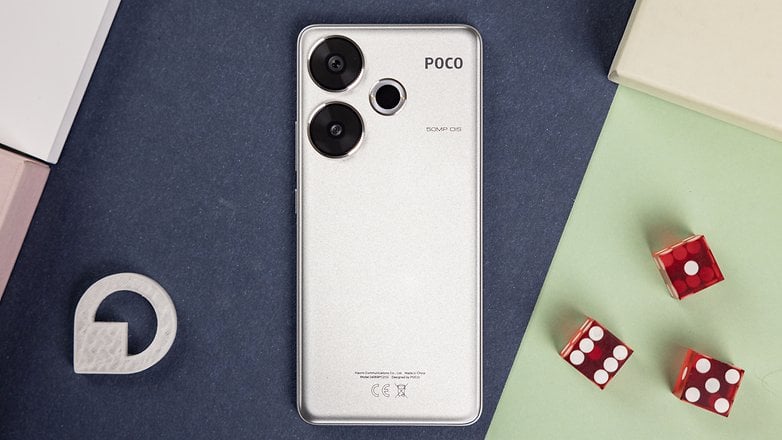
What's more, the basic model sometimes performs even better than the more expensive model. This applies, for instance, with the IP certification, having Gorilla Glass, and a newer Bluetooth version. The performance is likely to be relatively similar, but you can enjoy memory advantages and a better camera on the Pro.
- Be sure to read: These are the best Xiaomi smartphones you can buy in 2024
Both rely on HyperOS which is based on Android 14, where the Pro uses more premium materials in the form of a metal frame, and a faster charging speed. Software updates are similar for both handsets: up to four years of security patches and three major Android updates, but both smartphones also share some disadvantages: Neither features a 3.5 mm port for headphones or a memory expansion slot, and neither can be charged wirelessly.
In the end, it is easier to justify going for the Poco F6 because of its lower price, and basically an unmatched performance level at its segment. The Poco F6 Pro, meanwhile sits in a more competitive segment, with strong alternatives such as the OnePlus 12R, Nothing Phone (2), Galaxy S23 FE, and some Pixel models.







